First ever tagging of Amazon dolphins to boost conservation efforts
For the first time ever, WWF and research partners are now tracking river dolphins in the Amazon using satellite technology after scientists successfully tagged dolphins in Brazil, Colombia and Bolivia, attaching small transmitters that will provide new insights into the animals’ movements and behaviour and the growing threats they face.
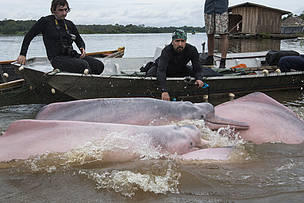
Freshwater dolphins being rounded up during tagging operation in Bolivia
As of Tuesday (December 5), 11 dolphins, including both Amazonian and Bolivian river dolphins – two of the four species of freshwater dolphin found in the world’s largest river system – have safely been tagged and researchers are already studying the incoming data.
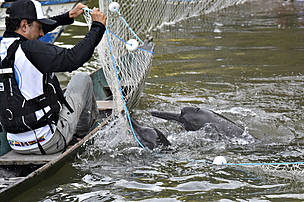
Dolphins in the Amazon in Brazil being caught in nets before being tagged with satellite transmitters
Despite their iconic status, little is known about the populations, habits or key habitats of river dolphins in the Amazon. While there are estimated to be tens of thousands of river dolphins, the species are currently listed as Data Deficient on the IUCN Red List of Threatened Species. The tags will enable WWF and its partners to study where the dolphins go, where they feed, and how far they migrate.
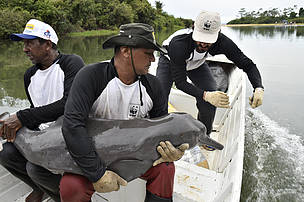
Dolphin being cared for during tagging operation in the Amazon in Brazil
“Satellite tracking will help us better understand the lives of this iconic Amazonian species more than ever before, helping to transform our approach to protecting them and the entire ecosystem,” said Marcelo Oliveira, WWF Conservation Specialist, who led the expedition in Brazil. “Tagging these dolphins is the start of a new era for our work because we will finally be able to map where they go when they disappear from sight.”
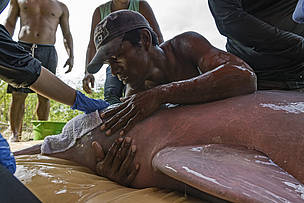
Freshwater dolphin being cared for during first ever tagging process in the Amazon in Bolivia
The tracking data will also guide efforts to tackle some of the major threats facing river dolphins, including hundreds of planned dams that would fragment many of the Amazon’s remaining free flowing rivers, worsening mercury contamination from small-scale gold mining, and illegal fishing.
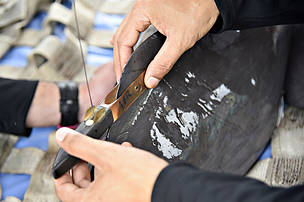
Satellite trasnmitter being attached to freshwater dolphin in the Amazon
"We who live in the Amazon know that our environment is facing growing and unprecedented threats and that our future is linked to the future of dolphins,” said Fernando Trujillo from Fundación Omacha, a Colombian research partner.
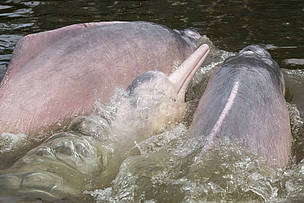
Amazon river dolphins in Bolivia
“This tagging project is critical because it will generate information that will enable governments across the region to target resources to protect dolphins and their habitats, which so many other species and communities also depend on," added Trujillo.
The capture and tagging of the dolphins followed a rigid protocol that prioritises the welfare of the animals. Having been caught in nets by teams of specialists, the dolphins were taken to shore for tagging in an operation lasting 15 minutes on average, before being released back into the water. None of the dolphins were injured during the operation and none displayed any ill effects after release.
Along with installing the transmitters, the scientists also took samples from the animals, which they will analyse for mercury levels and general health.
WWF and its partners will assess this historic tagging operation over the coming months and will look to scale it up and tag more dolphins if the technology continues to prove successful. The initiative is the latest step in WWF’s long-term efforts to conserve river dolphins across the Amazon.
In addition to scientific research, WWF will continue to work with communities, advocate with authorities and promote the creation of new protected areas.
Source: World Wildlife Fund
- 291 reads
Human Rights
Ringing FOWPAL’s Peace Bell for the World:Nobel Peace Prize Laureates’ Visions and Actions

Protecting the World’s Cultural Diversity for a Sustainable Future

The Peace Bell Resonates at the 27th Eurasian Economic Summit

Declaration of World Day of the Power of Hope Endorsed by People in 158 Nations

Puppet Show I International Friendship Day 2020

